Frank
J. Offermann / Offermann Stadium
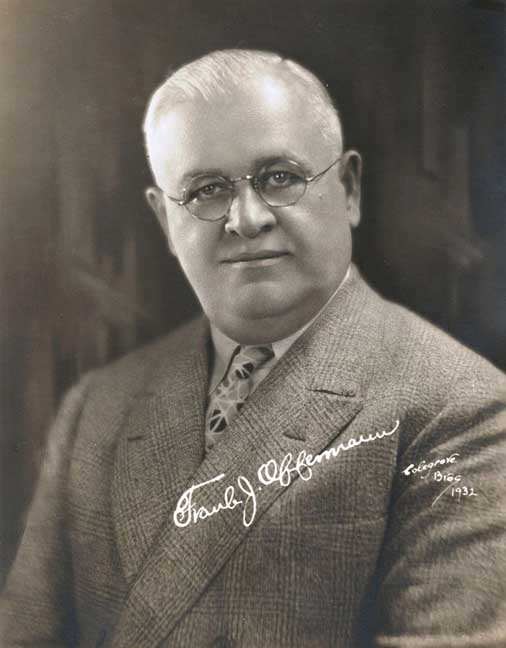 1876-1935  |
Birth: Sep. 6, 1876, Buffalo, NY Death: Feb. 3, 1935, Buffalo; United German and French Cemetery, Cheektowaga, NY Personal Note: His mother, as noted above, was "Genofeva Barth" German for Genevieve. His father, Gottfried Offermann, who emigrated from Koln, Germany when he was 16 to Buffalo, NY. Mr. Frank Offermann Sr.'s first wife, Gertrude Doerfel, died in 1922 and they had no children. He then married Isabel Marie Cole on 10/18/1923 @ Blessed Sacrament Chapel in Buffalo, NY and they had 4 children.
In addition to his printing/advertising business, "F.J. Offermann Art Works" at 299 Broadway, he also was an owner of the Buffalo Bisons Baseball Club in Buffalo, NY. and an Erie County Sheriff in Buffalo, NY 1933-35 Offermann Stadium formerly Bison Stadium was renamed in his memory upon his early death. Parents: Gottfried Offermann (1846 - 1914) Genevieve Sarah Barth Offermann (1848 - 1935) Spouses: Gertrude Doerfel Offermann (1879 - 1922) Isabel Marie Cole Offermann (1895 - 1988) Children: Francis J. Offermann (1926 - 2013) Siblings: Anna Offermann Morbusch (? - 1940) Magdalena Offermann Schunk (1870 - 1951) Frank J. Offermann (1876 - 1935) |
|
Frank J. Offermann Reprinted from "Buffalo and Its German Community (Online Jan. 2017) Copyright 1912 by Jacob E. Mueller Buffalo's
well known printing shop owner, Mr.
Frank J. Offerman, is a child of Buffalo. He was born on September 6,
1876 as the son of Mr. Gottfried Offermann.
His father came from Cologne on the Rhine and settled in this city in
1863. His mother, born Geneva Barth, first saw the light of the world
in Williamsville, N.Y.
Young Frank received an excellent education. After graduating from the famous Canisius College he became a clerk at the Lake Shore Railroad Office. He spent 2 years there. Then for 5 years he ran a wine and beer business. After this time he established a printing shop which mainly produced yearly calendars and advertising novelties for commercial establishments. His immense talent and untiring drive led Mr. Offermann to build an important business. Mr. Offermann is a member of St. Mary's Church and he belongs to many social groups such as the Elks, the Eagles, the Moose Lodge, the Orpheus, the C.M.B.A., the Buffalo Automobile Club, and the Wine and Liquor Dealers Association. On October 6, 1898 he married Miss Gertrude Dörfler. He lives with her in a pleasant home at 296 Hickory Street. His place of business is at 301 Broadway. |
|
Anyone with a passing interest of the history of baseball in Buffalo knows the name Offermann, as in Frank J. Offermann. The owner and president of the Buffalo Bison Baseball team from 1928-1935, Offermann was a marketing expert for the baseball team, increasing the popularity of the franchise in Buffalo with his promotional genius and astute baseball sense. Offermann utilized technology to increase the team’s popularity. He brought night baseball to the Queen City in 1930, five years before the Cincinnati Reds of the Major Leagues did so. Night games allowed fans with day jobs to attend games, keeping the team afloat during the depression era. Under Offermann’s leadership, the Bisons were also one of the first minor league teams to broadcast games on the radio, further connecting the team to its fans. Offermann was a master promoter and was one of first owners in baseball to utilize game day giveaways as a way of attracting children and new fans to the park. So beloved was Offermann that when he passed away in 1935 a vote by the Board of Governors unanimously agreed to re-name the stadium from “Bison Stadium” to “Offermann Stadium,” the ultimate show of respect given to an owner. He
was an inaugural inductee of the Buffalo Baseball Hall of Fame in 1985.
|
|
Professional baseball was played at the corner of East Ferry and Michigan Avenue in Buffalo, New York, for 72 years beginning in 1889, through the end of the 1960 season.   The site’s primary tenant was the International League Buffalo Bison, who played there from 1889 to 1960. According to Philip Lowry’s Green Cathedrals, Major league baseball also was played at this site for one year in 1890 when the Buffalo Bison of the Players League played their home games at new Olympic Park. The Negro National League New York Black Yankees played games at Offermann Park as a neutral site in the 1940s. The Negro American League Indianapolis Clowns played some games at Offermann (neutral site) from 1951 to 1955. Professional football also was played at the site, including National Football League Buffalo franchises (the All-Americans from 1920 to 1923, the Buffalo Bisons from 1924 to 1925, and 1927 to 1929, and the Buffalo Rangers in 1926). The ballpark faced Southeast towards the intersection of Masten Avenue and Woodlawn Avenue. Center field was located on the northwest corner of that intersection. After the ballpark was demolished in 1962, Woodlawn Junior High School was constructed on the site. 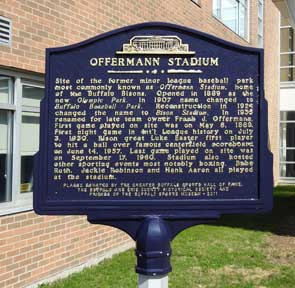 Plaque in front of Buffalo Academy for Visual and Performing Arts, 450 Masten Avenue ... Detail below: 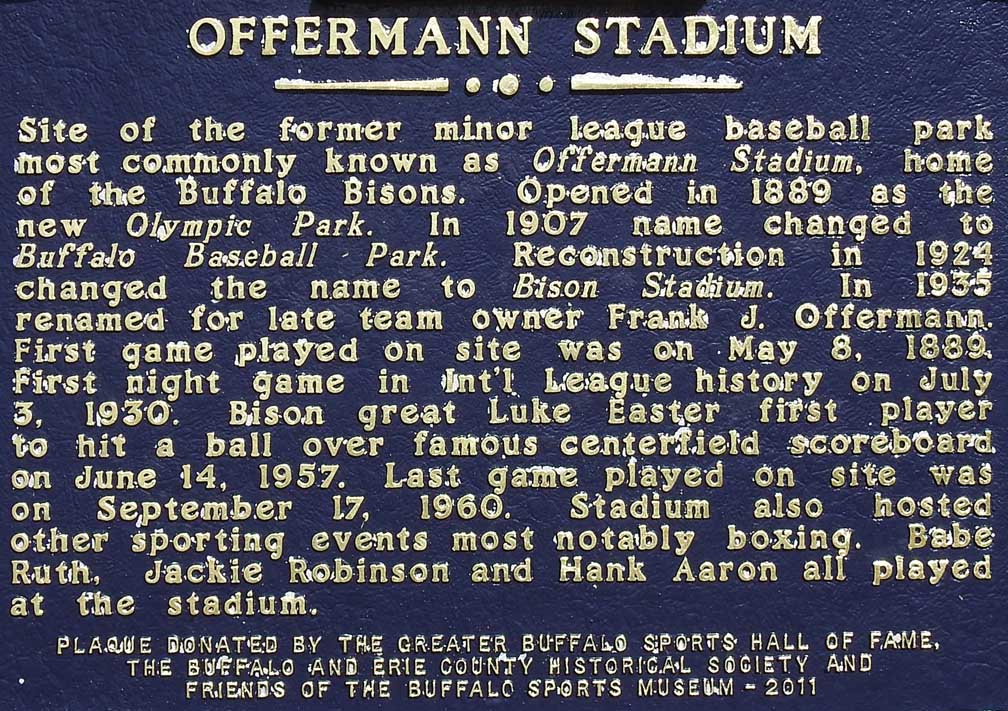 |
Ferry Street
Corridor Project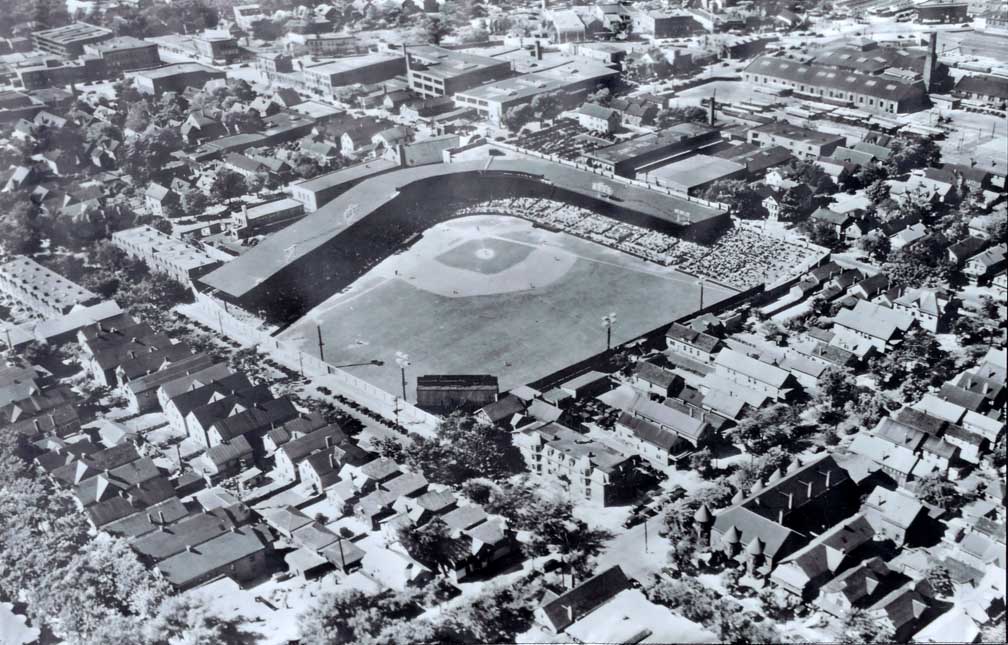 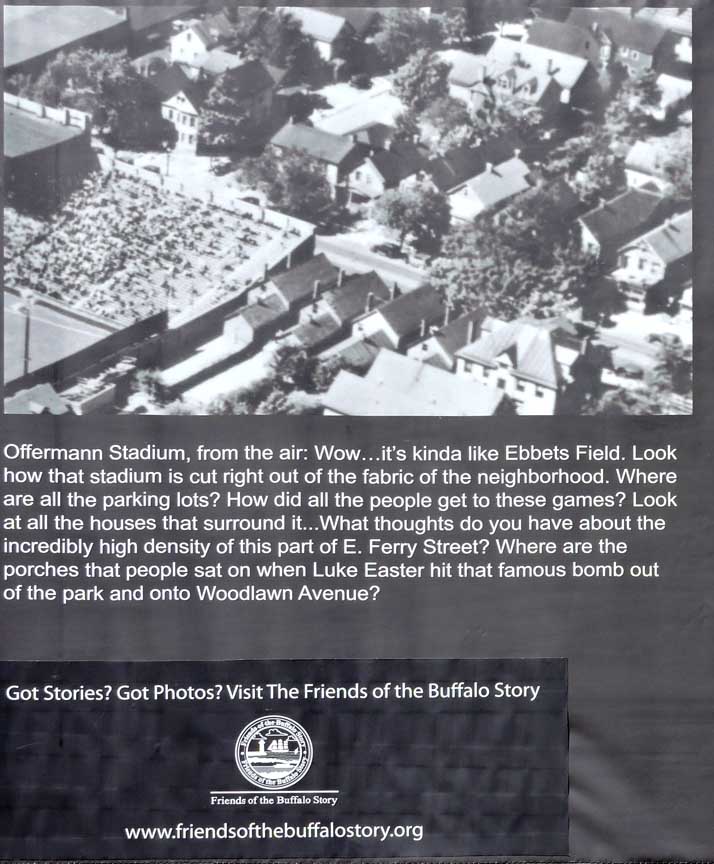 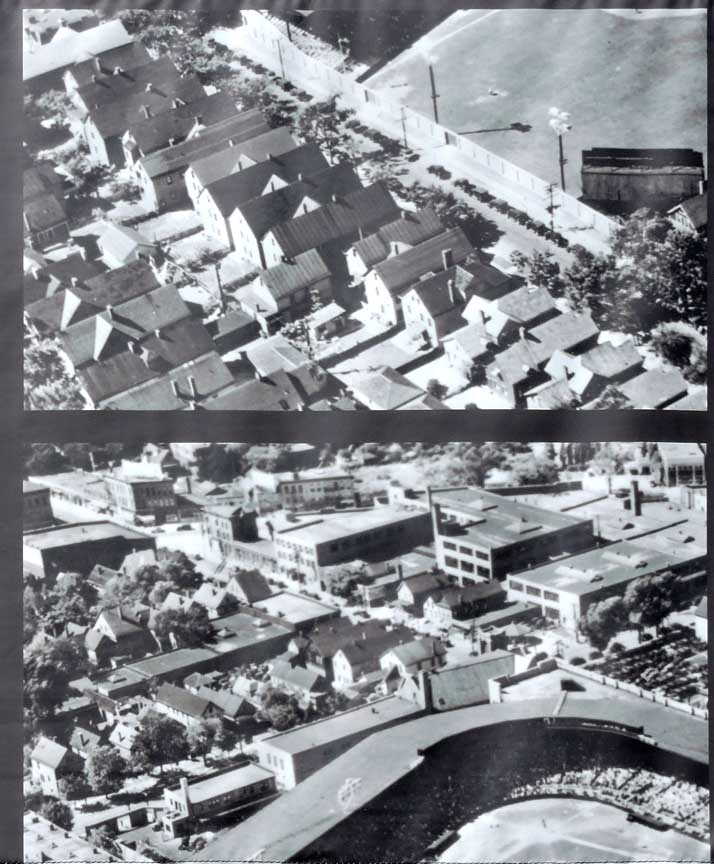 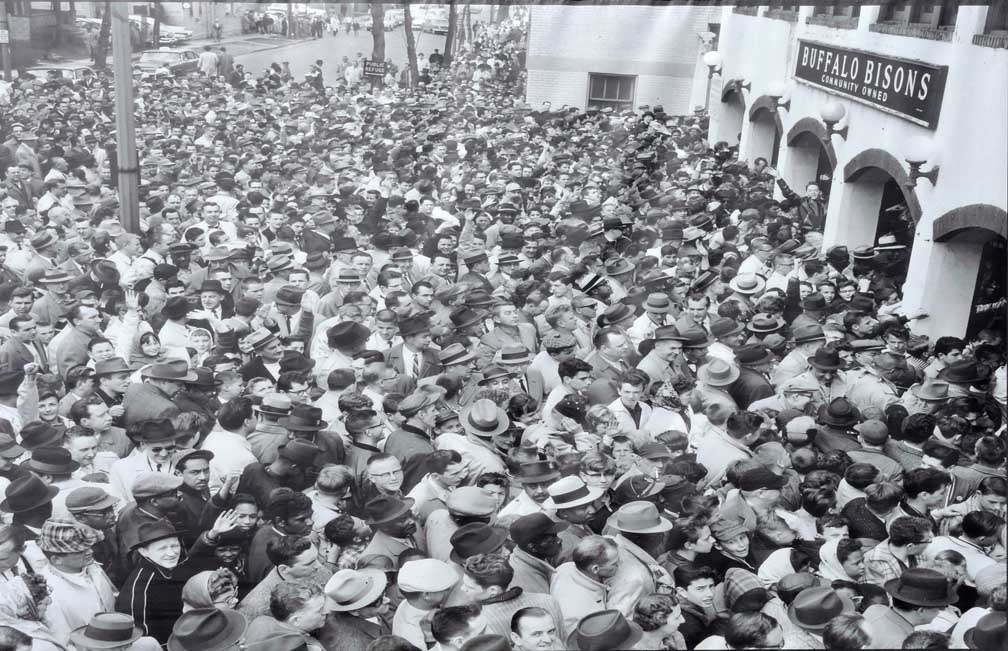 |
 Postcard |
|
There are few places in Buffalo with as rich a history as Offerman Stadium, a story that we uncovered as part of our Ferry Street Corridor Project. Built by Frank Offerman, the child of a German immigrant family, Offerman Stadium, like Ebbetts and Wrigley fields, was tucked tightly into the dense fabric of the Cold Spring neighborhood. For over forty years Offerman Stadium was a preeminent neighborhood focal point, a place where blacks and whites, who in those days rarely met in public places, came together to celebrate and enjoy the game of baseball. They came to watch the Buffalo Bisons, the minor league team that made their home here. And they came on those weekends when the great Negro league teams---The Kansas City Monarchs, the Pittsburgh Crawfords, the Newark Eagles and the Homestead Greys—came to Buffalo, to Offerman Stadium, on wildly popular“ barnstorming” tours. With downtown hotels off limits to the black ball players, those giants of Negro league baseball—Josh Gibson, Judy Johnson, Satchel Paige, Buck Henry and the rest—rented rooms in the neighborhood, hanging out on neighborhood porches, eating meals at Duke’s Dive and Mama’s Southern-Style BBQ on E. Ferry and the other tiny cafes and bars that filled the side streets. And at night, when the games were over they went to the jazz clubs, the Moonglow, The Colored Musicians Club and the Little Harlem. But times were changing and urban renewal was replacing baseball as the great American pastime. By the late 1950s the City wanted Offerman Stadium. They wanted it for a site for a new school, Woodlawn Jr High School. And so, in September, 1960 Offerman Stadium was demolished. But not before it played host to one last event. And what an event it was. Sponsored by Buffalo’s preeminent jazz impresario, the son of an Italian immigrant family, a man named Joe Ricco, the show, held over two days in August, featured the greatest jazz musicians in the world: Count Basie and Dinah Washington, Art Blakey and Dizzy Gillespie, Louis Armstrong, Duke Ellington, Oscar Peterson and Dave Brubeck. All of them, all right here at Offerman Stadium on E. Ferry between Michigan and Masten. For two days they played and for two days Offerman was packed and for two days the streets of Cold Spring were filled with the sounds of this most marvelous music. But then it was over and Offerman was torn down and replaced, sickeningly so, in 1964 by Woodlawn Jr., which, as a result of clearly and consciously drawn district lines, became the first legally segregated public school in Buffalo. The enlarged photographs that we mounted on our E. Ferry Street walls told that history. For those interested, those photos can still be seen, mounted on the Ferry Street side of School of Performing Arts. |
Special thanks to Barbara Townsend for her assistance in 2017.
Page by Chuck LaChiusa in 2017
| ...Home Page ...| ..Buffalo Architecture Index...| ..Buffalo History Index... .|....E-Mail ...| ..